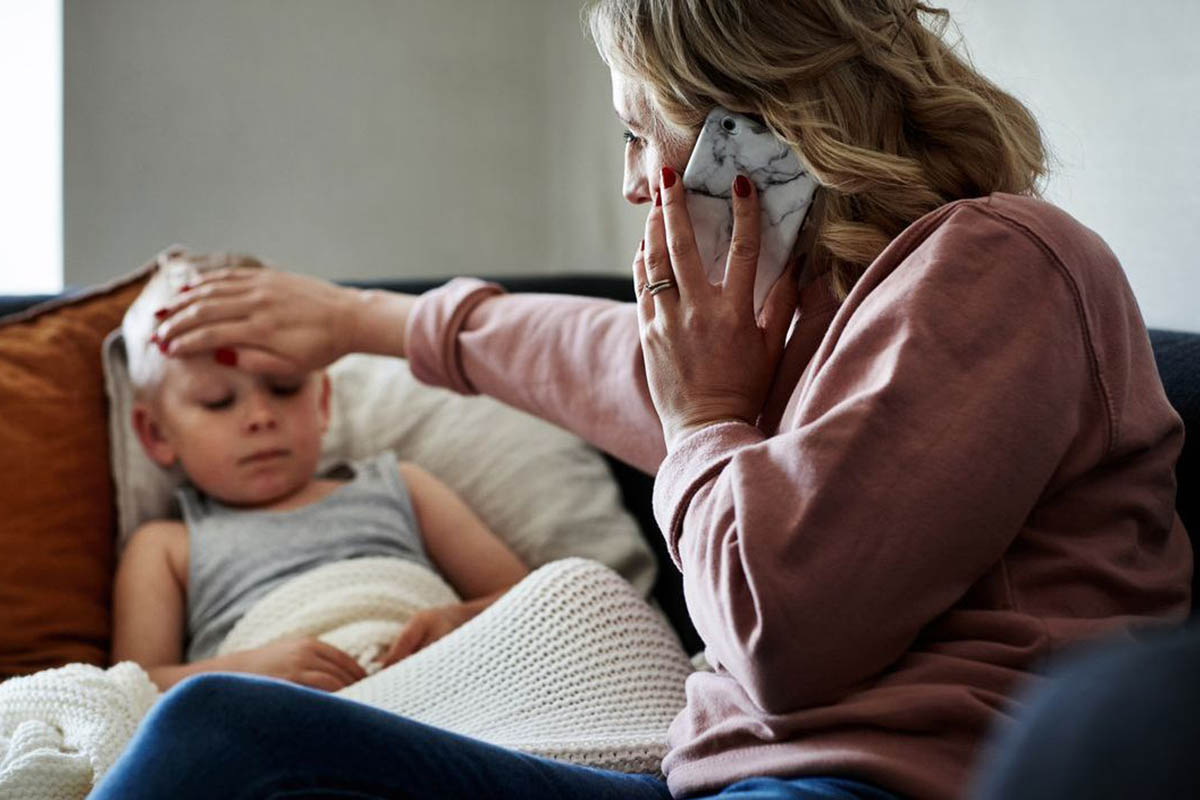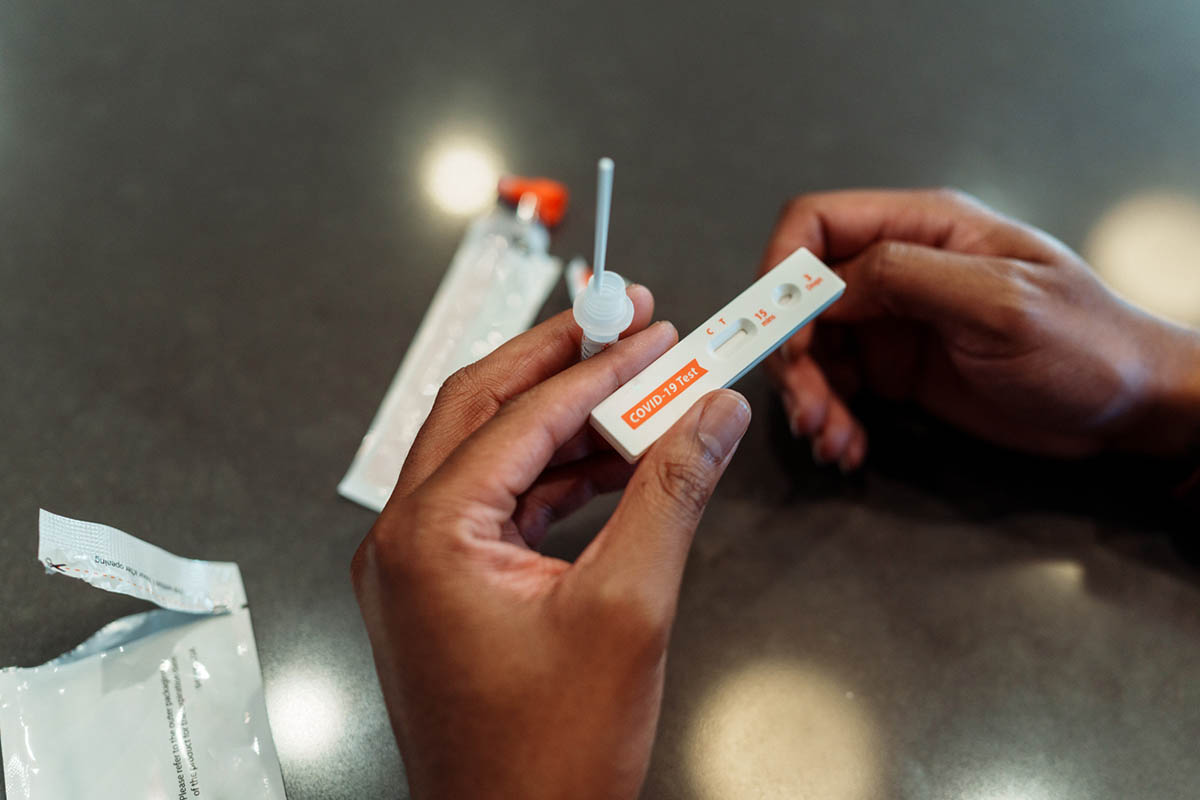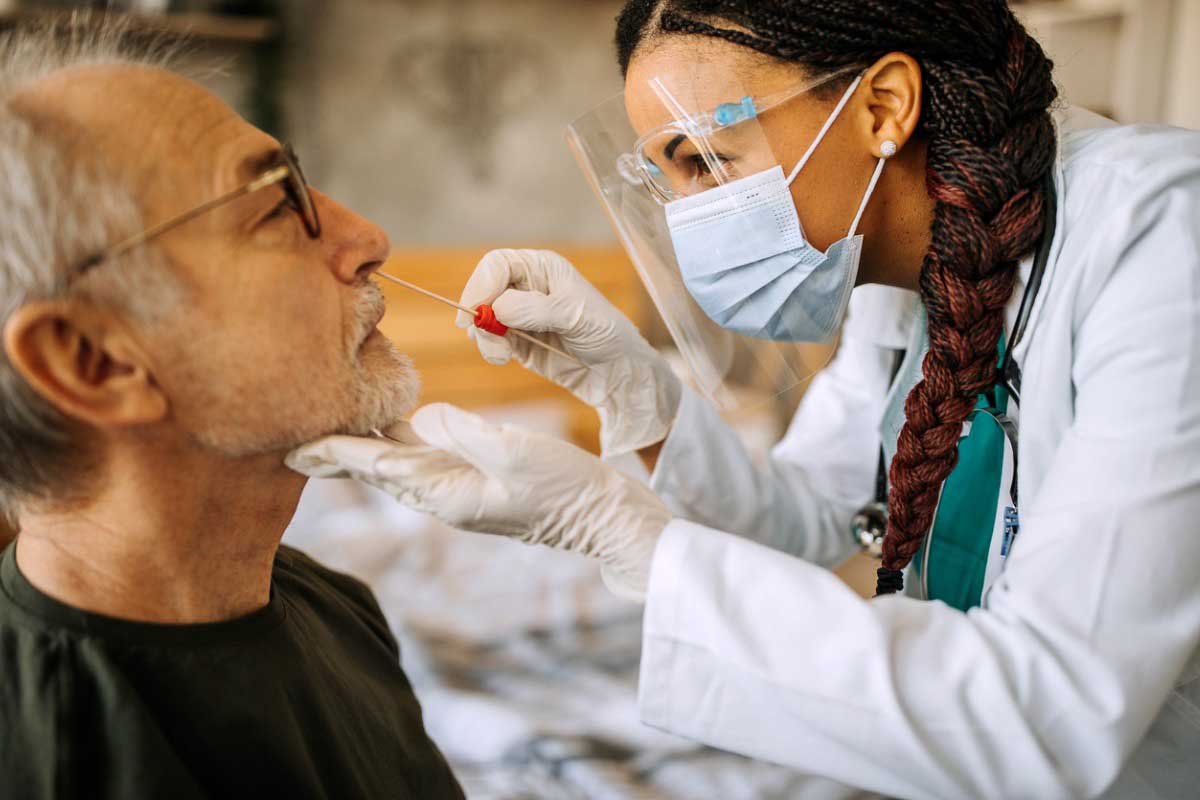
aSchool of Medicine, Università Vita-Salute San Raffaele, Milan, Italy
bIRCCS San Raffaele Scientific Institute, Mood Disorders Unit, Milan, Italy
cIRCCS San Raffaele Scientific Institute, Infectious Diseases Unit, Milan, Italy
*Corresponding author: Alessandro Sarzetto, MD, IRCCS San Raffaele Scientific Institute, Mood Disorders Unit, Via Stamira d’Ancona 20, 20127, Milan, Italy ([email protected]).
Prim Care Companion CNS Disord 2021;23(6):21cr03099
To cite: Sarzetto A, Mazzi F, Albano G, et al. SARS-CoV-2 pneumonia in a manic inpatient: implications in clinical care. Prim Care Companion CNS Disord. 2021;23(6):21cr03099.
To share: https://doi.org/10.4088/PCC.21cr03099
© Copyright 2021 Physicians Postgraduate Press, Inc.
Management of mania may be difficult during the coronavirus disease 2019 (COVID-19) pandemic. Here, we report the case of a bipolar patient who contracted severe acute respiratory syndrome coronavirus disease 2 (SARS-CoV-2) infection concomitantly with a manic episode.
Case Report
In March 2021, a 62-year-old man was admitted to our mood disorders unit for a manic episode after a negative SARS-CoV-2 molecular swab test. He was euphoric, talkative, delusional, and hyperactive and had minimal awareness of disease. His Young Mania Rating Scale1 (YMRS) score was 33. His antimanic therapy was progressively titrated to the following: haloperidol 2 mg/d, carbamazepine 400 mg/d, promazine 70 mg/d, delorazepam 2 mg/d, lithium carbonate 600 mg/d, flurazepam 30 mg/d, and hydroxyzine 25 mg/d. Psychopathology significantly ameliorated on the fifth day of hospitalization (YMRS score of 16). The next day, he complained of back pain and asthenia; his body temperature was 38.5°C (101.3°F) and SaO2 was 93%. A SARS-CoV-2 molecular swab result was positive. Treatment was suspended, except for promazine. His YMRS score was 3 at that time.
He was transferred to the infectious diseases department with the following vital signs: body temperature of 39°C (102.2°F), 30 respiratory acts/minute, and SaO2 of 94%–97% in room air. Chest auscultation detected harsh vesicular murmur without crackles. He was given nasal cannula oxygen 4 L/minute, anticoagulation prophylaxis with enoxaparin 4,000 IU/d, antibiotic therapy with ceftriaxone 2 g/day (for 7 days) and azithromycin 500 mg/d (for 4 days), and antiviral therapy with remdesivir (loading dose of 200 mg for 1 day, then 100 mg/d for 4 days). Noncontrast chest computed tomography showed interstitial pneumonia grossly involving 5% of lung parenchyma. It was preferred not to start corticosteroids. From the third day, the patient was stably apyretic, with improved respiratory function. Consequently, O2 support was suspended. Concomitantly, some manic symptoms reappeared (YMRS scored of 11), and antimanic treatment was reintroduced: haloperidol 1 mg/d, gabapentin 900 mg/d, olanzapine 2.5 mg/d, and promazine 50 mg/d. On the sixth day, he was transferred to a rehabilitation ward.
Discussion
This case report highlights several issues that emerged during the inpatient treatment of a manic episode. SARS-CoV-2 infectious risk was considerably heightened due to the patient’s increased prehospitalization social interactions and poor danger perception (he did not use protection devices or observe social distancing). Importantly, during his hospitalization, infectious risk was also extended to other patients due to a possible COVID-19 outbreak.
Furthermore, there was a possible risk of pharmacologic interaction between antivirals and antimanic treatment. For example, strong inducers of cytochrome P450 3A4, such as carbamazepine, should be totally avoided in combination with remdesivir because they can strongly decrease its levels.2,3 Moreover, remdesivir can cause transaminase elevation; this may interfere with the decision to use hepatically metabolized psychotropics, such as carbamazepine or valproate. Other psychotropics with a high risk of drug-induced liver injury, such as chlorpromazine, should be avoided in patients with transaminase elevation or COVID-19–associated liver disease.4
Similarly, corticosteroids may interfere with psychopathologic stability.4 For this reason, in our case, the psychiatrist (L.F.) and infectious disease specialist (A.D.) discussed whether to introduce a corticosteroid treatment, which has proved to be effective in SARS-CoV-2 pneumonia.5 They decided, considering the low involvement of the lung and the high risk of mania reactivation, not to start the treatment. However, in the case of more severe pneumonia, the decision could have been more difficult.
Finally, it is important to consider that infection may interfere with psychiatric evaluation of manic symptoms. SARS-CoV-2–related asthenia, sleepiness, and physical exhaustion might mask manic symptoms, possibly misleading the psychiatrist to consider an early resolution of the manic episode. As an example, at discharge from our ward, our patient scored 3 on the YMRS shortly after scoring 16, and such a rapid decrease is unusual.
Received: August 12, 2021.
Published online: November 18, 2021.
Potential conflicts of interest: None.
Funding/support: None.
Patient consent: The patient provided consent to publish this case report, and information has been de-identified to protect anonymity.
References (5)

- Young RC, Biggs JT, Ziegler VE, et al. A rating scale for mania: reliability, validity and sensitivity. Br J Psychiatry. 1978;133(5):429–435. PubMed CrossRef
- University of Liverpool. COVID-19 Drug Interactions. 2020. University of Liverpool website. Accessed April 15, 2020. https://www.covid 19-druginteractions.org
- Mansuri Z, Shah B, Zafar MK, et al. Remdesivir and potential interactions with psychotropic medications: a COVID-19 perspective. Prim Care Companion CNS Disord. 2020;22(3):20com02664. PubMed CrossRef
- Bilbul M, Paparone P, Kim AM, et al. Psychopharmacology of COVID-19. Psychosomatics. 2020;61(5):411–427. PubMed CrossRef
- Izda V, Jeffries MA, Sawalha AH. COVID-19: a review of therapeutic strategies and vaccine candidates. Clin Immunol. 2021;222:108634. PubMed
Please sign in or purchase this PDF for $40.




